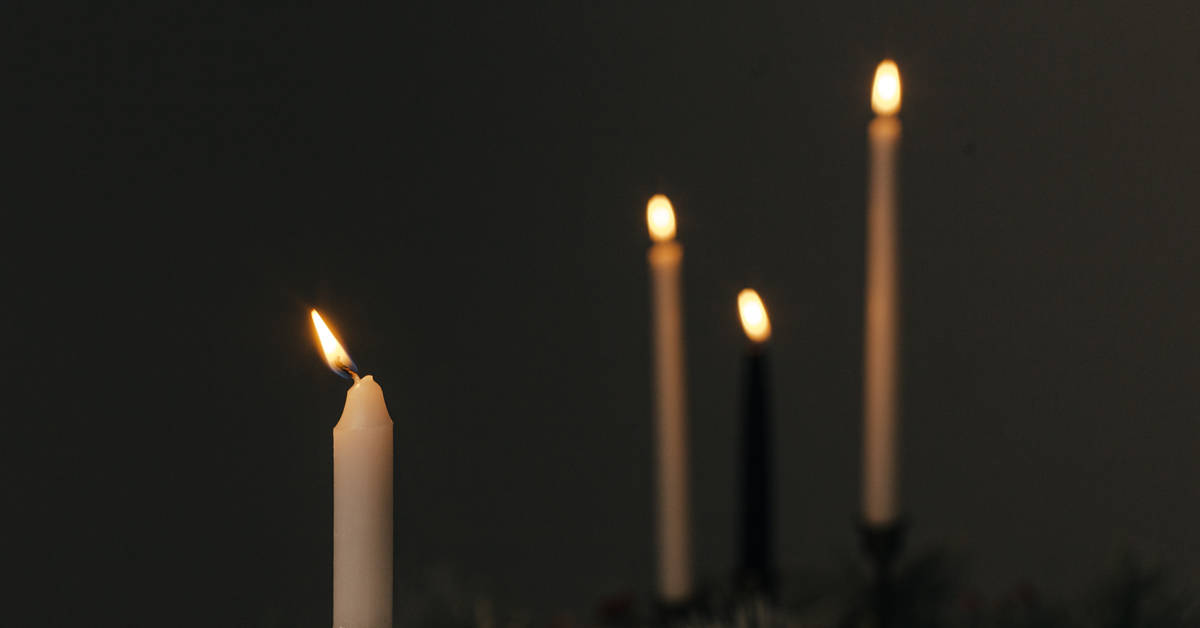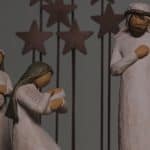
Imagine the first dawn after the birth of Jesus. Picture an exhausted Joseph, holding his adopted newborn in the aftermath of a very strange night, rubbing his bleary eyes and suddenly remembering the words of the prophet Isaiah:
The people walking in darkness
Isaiah 9:2 NIV
have seen a great light;
on those living in the land of deep darkness
a light has dawned.
That first Christmas morning, was Joseph capable of beholding the great light right before his eyes? Could he grasp what was taking place? To whatever extent he reached an understanding, did it come to him in a flash, or did it take a while?
I’m willing to bet it took some time. Human eyes can only take in so much light at once. Our brains can only comprehend so much so fast. Our hearts need time to expand.
Counterintuitively, the more glorious something is, the longer it takes to dawn on us.
Every year, whether we’re ready for it or not, we’re offered a fresh chance to take in the blazing miracle of the incarnation—God becoming flesh, the Light of the World moving into the neighborhood (John 1:14 MESSAGE). And yet, how many Christmases have we missed the glory entirely, captured by lesser lights, allowing ourselves to be spent (both literally and figuratively) attending to a thousand distractions?
Oh, how we need the season of Advent. On the Christian calendar, Advent always begins the fourth Sunday before Christmas. This means, depending on the year, Advent can begin as early as November 27 or as late as December 3, offering us a three-to-four week season of preparation and longing. When we observe Advent with intentionality, we give ourselves the chance to take in a bit more of the light each day: adjusting our eyes, calibrating our hearts, preparing him room.
It’s no coincidence that this book of Advent and Christmas reflections is entitled A Light Has Dawned. The articles in these pages were all written for Christianity Today over a sixty-year period. Certainly, the pieces vary to some extent in style and tone. But there is a remarkable cohesion around the invitation to attend to the light.
As we read A Light Has Dawned, we might envision this collection of reflections as a series of frames in a slow-motion sunrise. Each day of Advent and Christmastide, there is an invitation to allow the wonders of the incarnation to dawn on us incrementally, as we take in the light at a rate we can absorb. Imagine what might happen if we really do go slow this year. Can we, like Mary, learn to treasure the miracle, to ponder it in our hearts? Will we, like the Magi, train our eyes on the light and pursue it at any cost?
A Light Has Dawned is arranged to bring us through Advent and into Christmastide, culminating on January 6 with Epiphany. My prayer for you is that by the time we reach those early days of January, we will have absorbed enough of the light to be able to say with Helmut Thielicke: “There is a sun ‘that smiles at me,’ and I can run out of the dark house of my life into the sunshine.”

This post was adapted from Carolyn Arends’s introduction to A Light Has Dawned: Meditations on Advent and Christmas (Lexham Press, 2020).






